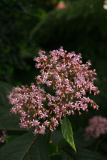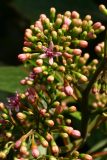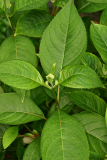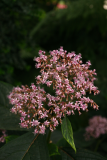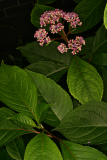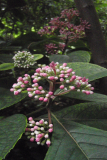Additional notes (click to expand)
Medicinal
GABA receptor agonist and prolyl-tRNA synthetase inhibitor. Contains febrifugine, a powerful but toxic anti-malarial which was converted to methaqualone, the basis for Mandrax, a popular UK sleeping tablet in the 1960s. The halogenated derivative halofuginone is used in veterinary medicine as a coccidiostat.
Oakeley, Dr. H.F. (2013). Medicines from RCP plants label list 5-2013.docx.
Prescription only medicine: dichroine-methaqualone
Nomenclature
Dichroa febrifuga is a synonym
http://www.plantsoftheworldonline.org/
Other use
Used in Chinese medicine for treating fevers, it was found, in 1948, to contain a compound called betadichroine in the dried roots, which had potent anti-malarial activity. An identical chemical, which came to be called febrifugine, was isolated from the leaves of garden hydrangeas. It proved to be 64–100 times more potent than quinine as an anti-malarial in animals, but equally more toxic. Trials on prisoners in Texas, and on patients in Mexico, showed that it caused such persistent vomiting and hepatotoxicity in effective doses that it was unusable, and in doses that were tolerated it was ineffective. Ever-resourceful pharmacists synthesised a tolyl derivative, which was found to be a mild hypnotic (‘short acting, no hangover, no side effects’ etc, as the drug reps used to tell the junior doctors of my day over a steak supper), and marketed in the mid-1960s as methaqualone, an ingredient of the sleeping tablet ‘Mandrax’, which quickly became the drug abuse of choice for getting a ‘high’. It was almost as quickly banned by most countries. Illegal manufacture continues in South Africa where methaqualone powder is mixed with cannabis and smoked.
Oakeley, Dr. Henry. (2011). A Year in the Medicinal Garden of the Royal College of Physicians, revised edition. Royal College of Physicians, London. p83
link
Geographical distribution
- Asia-Temperate, China
- Asia-Temperate, Eastern Asia, Japan
- Asia-Tropical, Indian Subcontinent, East Himalaya
Hydrangea febrifuga (Lour.) Y.De Smet & Granados
Family: HYDRANGEACEAEGenus: Hydrangea
Species: febrifuga (Lour.) Y.De Smet & Granados
Common names: Chinese quinine, Fever-flower
Distribution summary: E. Asia: Himalaya, China, Japan, Malaya
Habit: Perennial
Hardiness: H5 - Hardy; cold winter
Habitat: High altitude woodland, damp woods, river banks
Garden status: Currently grown
Garden location: Plants of the World (C), Far East (L), Plants in pots (POT)
Flowering months: May, June, July
Reason for growing: Medicinal, other use, prescription only medicine
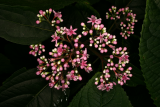
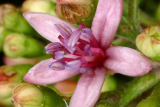
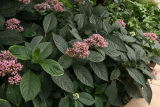
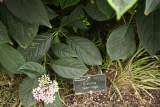
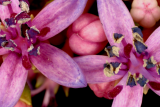
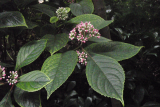
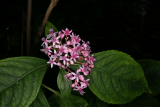
.JPG)
.JPG)
